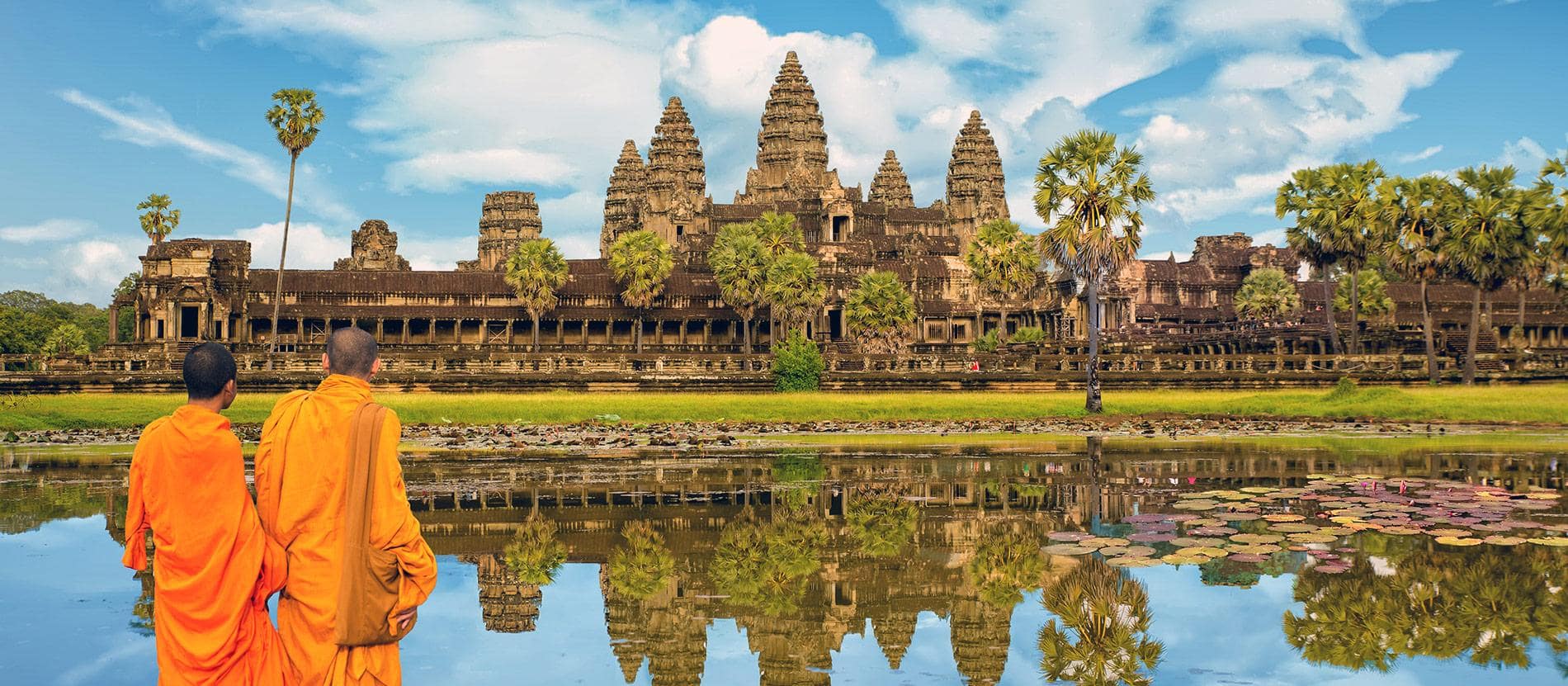Built between 9th to 15th centuries, the temples of Angkor consist of several groups of monuments covering an area as large as 200 km2 (77 square miles). Their construction was carried on in such a scale and with such an architectural and artistic greatness that the sight of them has never failed to fill visitors with awe, ever since a French explorer named Henri Mouhot “rediscovered” them in 1860, when they had almost been swallowed by the jungles of the North-west of Cambodia.
Influenced first by Hinduism then Mahayana Buddhism, the kings of Angkor, while holding on to the religions’ mythologies and ideals, created however unique architectural concepts and artistic manifestations that set their temples apart from all others. Today, amateur visitors and experts alike can’t help but be amazed by the diversity and creativity that can be seen in the layouts, structures, materials, carving details etc of different sites. “Old stones can speak”, and the emotions evoked while visiting these temples are an experience one shall not forget.
Most of the major Angkorian temples are surrounded by a moat filled with water. The main entrance facing east is accessed through a causeway. In the old days, the moat served as a protection for the temple and the water from it could be used in case of fire. However, on a more spiritual note, water was also a symbol for purification before entering a holy place. From the esthetic point-of-view, it was a much appreciated soothing element to the solemn constructions. Centuries of abandonment to nature after the move of the capital to Phnom Penh had allowed the greedy jungle to grow around and even inside the sacred home of the Gods and the God-kings. Destruction done, the charm of the left ruins is now enhanced by the presence of an impressive vegetation, centuries-old trees with strangling roots.
Despite an increasing number of tourists pouring into the Angkor Archeological Park every day, today visitors can still manage to avoid the crowd and find them-selves almost alone to witness the splendor and enigma of the vestiges of this lost empire, thanks to the great number of monuments, as well as their incredible sizes and the reasonable distances between one site and another.
Whether one is taking a motorized vehicle, a bicycle or on foot, moving around from one temple to another is a reward in it-self, since one can enjoy the shady trees of the jungle, feel captivated by the strange atmosphere of the mangrove or admire the bucolic scenery of large paddy fields and sugar palms.
A sketch of the legacy of the ancient Khmer civilization would be incomplete without the presence of the Khmer people, whether they are photogenic yellow dressed monks; shaved, white dressed old devotees holding some incense sticks; curly hair, brown skin young girls and boys trying to sell postcards and drinks with their sweet voice; tour guides with krama (Khmer scarf) around their neck commenting passionately on some bas-reliefs; well-to-do Khmer families having their picnic on the bank of Angkor Wat’s moat; or policemen standing by their motor on the road side to assure sunset and sunrise admirers that they will be safe even at such odd hours in the middle of the jungle.
Among them all, Suryavarman II and Jayaverman VII are the most famous. The former is the founder of Angkor Wat, while the later is the builder of Angkor Thom and Ta Prohm. Together they created the glory of the Khmer people. The image of Angkor Wat is printed on Cambodian flag and indeed has become widely a symbol of the nation. On the other hand, the enigmatic smile on the stones of Bayon will obssess visitors for long, as though it wanted to remind them to never forget this wonder named Angkor. And indeed they won’t!
Explore Cambodia on a luxury hand
Do you feel like an adventure in Angkor Wat? Make all above happened on a journey of discover and make sure to include them on your Cambodia luxury travel


You May Also Like
Vietnam Jungle Adventure: The Ultimate Off-Road Motorbike Expedition
Vietnam Off-Road Motorcycle Expedition: Jungle Trails for Adventure Riders So this post is about motorbike ...
Halal Foods in Hanoi Vietnam
17+ Must-Try Restaurants for Halal Foods in Hanoi, Vietnam For Muslim travelers searching for halal ...
Vietnamese Phrases
Essential Vietnamese Phrases and Greetings words Every Tourist Should Know: Whether you explore local markets ...
Things To Do In Vietnam
This post covers activities, things to do, tourist attractions, unique spots, and free places to ...
How to Cross Vietnam, Laos & Cambodia Borders with a Vietnamese Motorbike
Vietnam to Laos & Cambodia by Motorbike: Border Crossing Guide for 2025 The Vietnam–Laos–Cambodia–Thailand border ...
Things To Do In Vientiane Laos
Tourist Attractions & Best Things to Do in Vientiane, Laos This Vientiane travel guide highlights ...